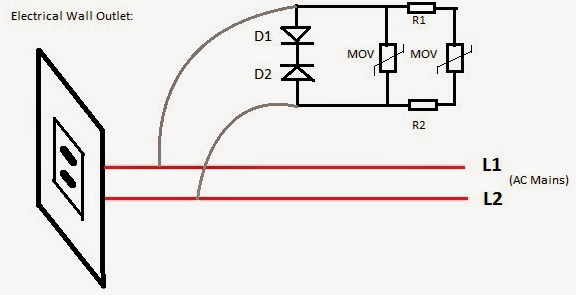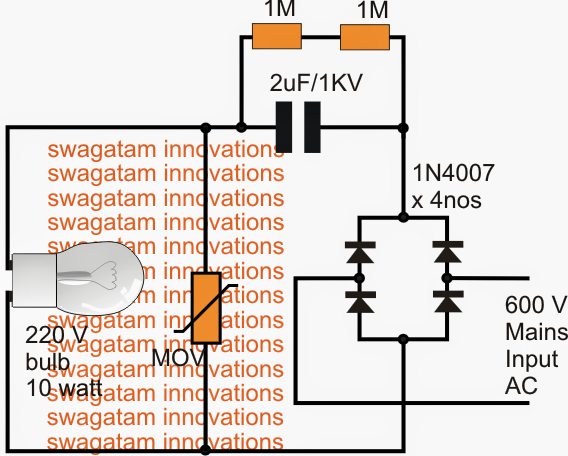The post talks about a set up for assessment and utilizing MOVs which can be special devices stipulated for consuming immediate high surge currents that could mistakenly happen in our mains electrical lines.

An MOV will have to be linked across LINE and NEUTRAL and not LINE and GROUND, so ground might not be essential to MOVs, essentially it basically ought to be linked across the load mains input terminals.
An MOV is made to protect against immediate high voltage surges which could survive for not more than a few nano seconds....for instance if there's an quick voltage spike of say 600 V for 3 nano seconds, the MOV will gladly counteract it by brief circuiting it across the associated terminals.
In spite of this if this type of spike maintains even for a second it could result in the MOV to get damaged and catch fire.
To establish and show the operating these particular devices you might need a 600 V AC source resulting by upgrading the domestic 220 V by means of an auto transformer, thereby making the circuit set up as demonstrated in the diagram.

The figure exhibits a bridge network which rectifies the 600 V AC to 700 V DC and this DC is then fired across the MOV circuit carrying a susceptible 220 V, 10 watt lamp. This is achieved by way of a 2uF/1KV capacitor to be able to safeguard the MOV as it's not built to manage continual high surges.
Generally the hooked up lamp would certainly immediately get burnt when exposed to this substantial 700 V, but the experiment will hopefully demonstrate how the enormous voltage is effectively assimilated and neutralized by the MOV preserving the bulb's life.
The diode set up is not advised, simply because TVS diodes can behave like short circuit if they occur to get ruined, this could indicate the wires catching fire or the fuses blowing of.
An NTC may be chosen according to its highest voltage rating specifications, this voltage rating will figure out how much immediate high voltage the device is rated to limit.
Leave a Reply